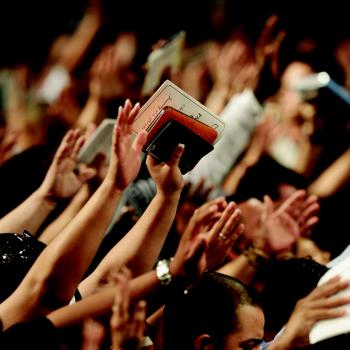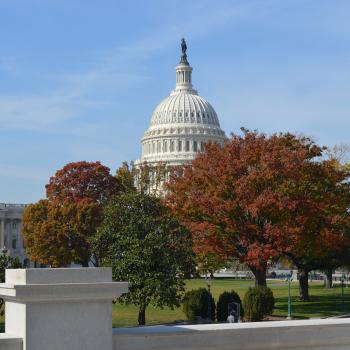Well, this is going to be uncomfortable for some Trump loyalists, but under the circumstances, I’d say this deserves a listen.
A month ago, President Trump made a decision to send over 1,000 National Guard troops to our nation’s southern border, in order to give assistance to U.S. Border Patrol agents, as they work to stymie the flow of illegal immigration.
At the time of this announcement, I was pleased. It was a step in the right direction, although, I’ve maintained that there was more to be done, if President Trump and his administration are truly sincere about their desire to secure the U.S.-Mexico border.
Let’s face it. A lot of presidents have verbally addressed the issue at the border, but few have made any real moves to do anything to improve the situation.
And no, I’ve never been in favor of Trump’s magical border wall, which would be paid for, somehow, by the Mexican government.
I knew that was a crock of nonsense from the first moment Reverend Donnie of the Trump’s Temple passed it out as spiked punch to the maniacs in his flock.
Our Energy Secretary Rick Perry, former governor of the state of Texas, had a solid border control plan, and had the Republican voters been so wise as to back his run at the presidency, I’m pretty certain we’d be well on our way to a more secure border, with a lot less legal and political chaos.
Perry proposed putting more boots on the ground at the border, strategic fencing, and aviation assets to communicate with rapid responders on the ground.
Seriously. How difficult could it be to toss a few drones over the border with an eye on the ground?
That being said, I felt like getting our border agents some backup, by way of National Guard troops was a good start, and one of those few times where I could find myself in agreement with this administration.
Well, it hasn’t really been a winning strategy, according to the head of the national Border Patrol union. In fact, he’s calling it a “colossal waste of resources.”
Ouch.
“We have seen no benefit,” said Brandon Judd, president of the union that represents 15,000 agents, the National Border Patrol Council.
“When I found out the National Guard was going to be on the border I was extremely excited,” Judd said, because previous deployments on the border helped alleviate the Border Patrol’s workload.
But this time, he said, “that has not happened at all.”
Apparently, there are some issues.
I have to note here that the Border Patrol union endorsed Trump during the election and viewed his attitude towards border security favorably.
He was their guy, but this just isn’t working out.
There were around 1,600 troops sent to the border, originally, with another 750 scheduled to join them in support roles. Depending on need, the number could reach a total of 4,000, according to Army Lt. Col. Jamie Davis, a Pentagon spokesman.
So what, exactly, are these National Guard troops doing at the border?
A Border Patrol spokeswoman said National Guard troops had assisted with 3,924 deportations, 1,116 “turn backs” of migrants into Mexico and the seizure of 3,486 pounds of marijuana — all by operating support technology and equipment. She said they had replaced some Border Patrol agents at observation posts. “Instead of an agent watching a camera, they can,” she said.
Border Patrol Acting Chief Carla Provost responded to the union’s claims by acknowledging that the National Guard’s role has changed compared with past deployments. Although they have been deployed to the border, they have to be paired with an agent who has law enforcement powers, and Border Patrol and defense officials decided it was better to use them behind the scenes for surveillance and air support.
“I want my agents out on the front line enforcing the laws,” Provost said Thursday during a visit to the agency’s Rio Grande Valley headquarters.
One official with the Pentagon has suggested that the National Guard presence, as it was with George W. Bush, Obama, and now Trump hasn’t changed, significantly. Only the perception of their presence has changed.
So why the disconnect between what the paper-pushers are saying and what the union boss is saying? How do those with the boots actually on the ground see it?
The last time the National Guard was deployed to the border — in Texas in 2014 and borderwide in 2010 — troops assumed Border Patrol posts on the front lines, easing the workload, Judd said. Although National Guard members were restricted to an “observe and report” role and couldn’t detain migrants, they still aided patrols.
“They were allowed to do a lot more than they are under the Trump administration. They were allowed to be in lookout and observation posts. They were allowed to be out grading the roads and mending fences. They were allowed to be our eyes and ears, freeing us up,” Judd said.
“Limited” is the word being used to describe the current deployment of National Guard troops to the border, and what they’re allowed to do just isn’t the kind of help they feel they need.
“We generally support the administration, but we’re not going to be cheerleading when things are not going well,” Judd said.
Some of the complaints are that troops are stationed too far away from the border. Unfenced areas of the Rio Grande, a hot spot for drug smuggling, remains unguarded. Instead of policing those areas, troops are fixing roads and fences – something agents see as “busy work.”
“It’s not saving any manpower yet,” an agent wrote, and other than the air support, he said the deployment has “been a waste.”
“You would think that they could put some of those guard members in some of the control points to allow the agents [to] actually go out and work the field but that has not been done,” another agent wrote.
A third agent said: “They aren’t out in the field like last time, doing the observation points. So if the goal was to get more agents out to the line, they have fallen short.”
And a lot of money is being paid to keep those troops at a border doing, essentially, nothing of value.
The expected price tag, running through the end of the year is somewhere around $220 million to $252 million, according to a Department of Defense spokesman, Christopher Sherwood.
That includes $204 million to $221 million in pay and support costs for 3,143 troops and $16 million to $31 million for 12,000 flying hours by 26 UH-72 Lakota helicopters, Sherwood said.
Paying the tab for this was always going to be uncomfortable, but it would be made more bearable, if only it were effective.
Maybe doing things for reasons other than show and allowing those who are actually on the ground, rather than bureaucrats in an office, many miles away from the problem should be the first line of planning for this sort of operation.










